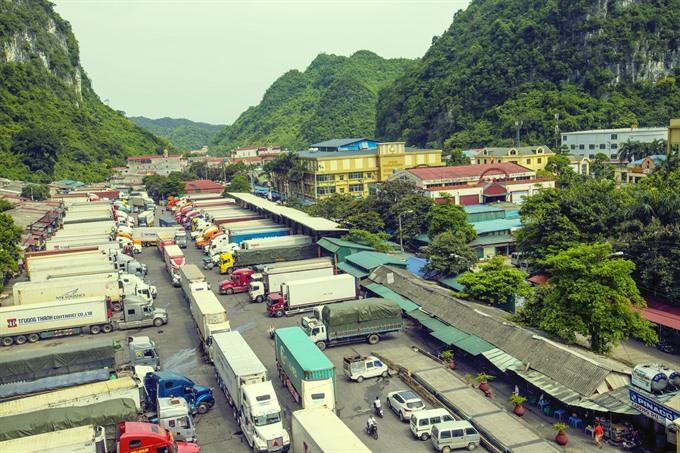Vietnam urges China to open doors to farm produce
Volume shipped to China accounts for almost 20% of Vietnam’s total agricultural exports.
Hanoi has asked Beijing to thoroughly solve the stuck of goods at the border gates, which has been lasted for months due to China’s strict Covid-19 restrictions.
| Vietnam's Prime Minister Pham Minh Chinh in a phone talk with China's Premier Li Keqiang on Jan 13. Photo: VGP |
The two countries need close cooperation to maintain the supply chain between Vietnam and China as well as the region, Vietnam’s Prime Minister Pham Minh Chinh said in a teleconference with his Chinese counterpart Li Keqiang on January 13.
Smooth transaction will help people and businesses of the two countries have good celebrations of the upcoming Lunar New Year, Chinh made the statement during the phone talk of the two governments’ leaders on the occasion of the 72nd anniversary of establishing diplomatic relations (January 18, 1950- January 18, 2022).
PM Chinh requested China to continue opening its doors to Vietnamese goods, fruit, and farm produce. He stressed that Vietnam is determined to follow the motto “it must be safe for export and export must be safe.”
For his part, Li Keqiang said he kept in mind the request on cooperation in economics, trade and investment, noting it is an important issue in bilateral relations.
Vietnam’s goods have been stuck at border gates with China since early December 2021. According to the General Department of Vietnam Customs, more than 6,000 container trucks are strapped at the border checkpoints as of end-December. As many as 80-90% of the total goods are farm produce and seafood.
The Vietnam Fruit Association Exporters had previously said that exporters could lose up to VND4 trillion (US$174 million) as the result.
The situation has prompted the Vietnamese PM to send a letter to his Chinese counterpart and meet the Ambassador of China to Vietnam. In addition, dozens of high-ranking meetings were held over the past time to solve the situation.
It results in a better situation for a while, but no thorough solutions have been made. A large part of the fresh produce (dragon fruit, jackfruit, watermelons, and mangoes) has rotted while waiting for weeks. Many trucks have to turn around, causing huge losses to exporters.
Facing big losses, a number of traders have headed back to Hanoi and surrounding provinces to sell farm produce at prices equal to one-fourth of the cross-border rates.
| Container trucks are stuck at border gates with China. Photo: VNA |
China is Vietnam's largest trade partner and one of Vietnam’s top importers of agriculture, forestry, and fishery products. The turnover rose from $8 billion in 2015 to over $11 billion in 2021.
In 2021, China was Vietnam’s second-largest export market of agricultural, forestry, and fishery products behind the US with a volume worth approximately $9 billion, accounting for 20% of Vietnam’s total agricultural exports.
In 2021, the Vietnam-China trade values hit the record high at $160 billion, with Vietnam incurring a trade deficit of $109.9 billion. In 2020, the two-way trade was $133 billion, up 13.8% on year, with Vietnam suffering a trade deficit of $84.18 billion.
During the phone talk, Chinh wanted the two sides to continue the implementation of three legal documents on the Vietnam-China border, especially in dealing with arising issues; maintain peace and stability in the South China Sea; respect each other’s legitimate rights that are stipulated in international law and the United Nations on Convention of the Law of the Sea (UNCLOS); and substantive negotiations of the Code of Conduct (COC) in the South China Sea.













